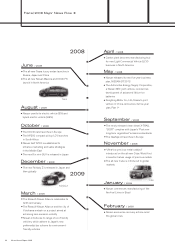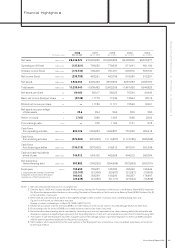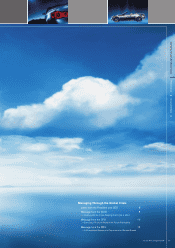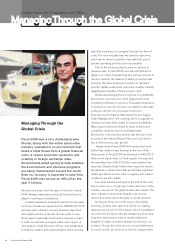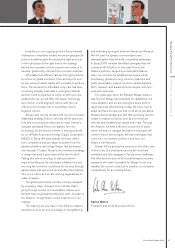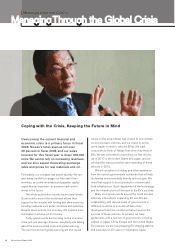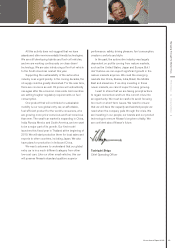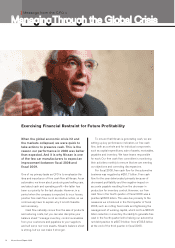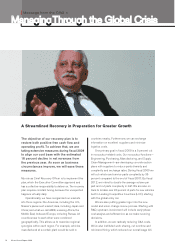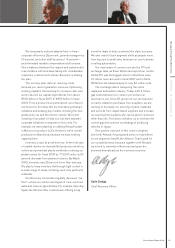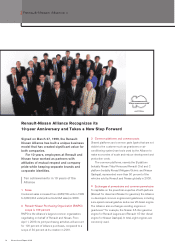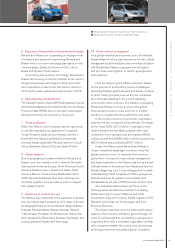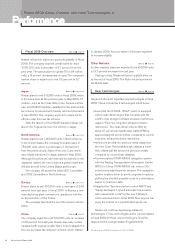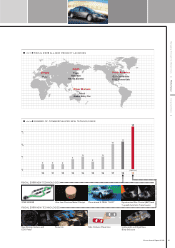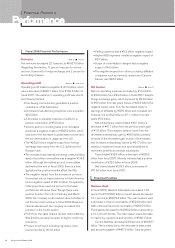Nissan 2009 Annual Report Download - page 14
Download and view the complete annual report
Please find page 14 of the 2009 Nissan annual report below. You can navigate through the pages in the report by either clicking on the pages listed below, or by using the keyword search tool below to find specific information within the annual report.
Message from the CRO >
The objective of our recovery plan is to
restore both positive free cash flow and
operating profit. To achieve that, we are
taking extensive measures during fiscal 2009
to align our cost base with the estimated
18 percent decline in net revenues from
the previous year. As soon as business
circumstances improve, we will ease these
measures.
My role as Chief Recovery Officer is to implement this
plan, which the Executive Committee approved and
has a collective responsibility to deliver on. The recovery
plan requires constant tuning, because the unexpected
happens virtually daily.
Operationally, we have reorganized our markets
into three regions: the Americas, including the U.S.,
Nissan’s paramount market; Asia, including Japan and
China; and what we call AMIE, meaning Africa, the
Middle East, India and Europe, including Russia. All
countries near to each other were combined
geographically. This allows us to maximize regional
synergies within each region. For example, vehicles
manufactured at a certain plant would be sold in
countries nearby. Furthermore, we can exchange
information on excellent suppliers and minimize
logistics costs.
One primary goal in fiscal 2009 is a 5 percent cut
in monozukuri-related costs. Our monozukuri functions
—
Engineering, Purchasing, Manufacturing, and Supply
Chain Management—are developing concrete action
plans with suppliers to reduce parts diversity and
complexity and exchange rates. During fiscal 2009 we
will cut vehicle and service parts complexity by 35
percent compared to the end of fiscal 2007. By fiscal
2012, we intend to double the average volume per
part and cut parts complexity in half. We are also on
track to localize over 90 percent of parts for new vehicles
built in Leading Competitive Countries (LCC), starting
with the global entry car.
We are also putting greater rigor into the new
model and minor change review process. Starting with
R&D, upstream involvement will include early-phase
cost analysis and afterservice as we make sourcing
decisions.
In addition, we are radically reducing G&A costs.
We’ve also instituted work sharing, cut overtime and
minimized hiring, which reduced our overall wage bill.
A Streamlined Recovery in Preparation for Greater Growth
12 Nissan Annual Report 2009


